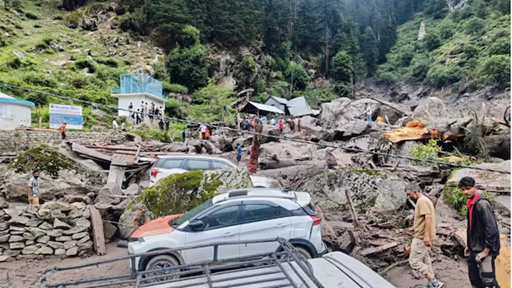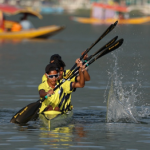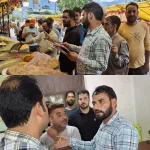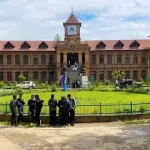The cloudburst in Chishoti, Paddar area of Kishtwar, struck like a nightmare. Within moments, the roar of boulders and debris, piercing cries, and the relentless rain turned the serene landscape into a scene of devastation. Pilgrims walking along the sacred route of the Machail Mata Yatra suddenly found themselves caught in nature’s fury. Yet, amidst the terrifying chaos, rays of hope emerged in the form of men and women in uniforms and volunteers in plain clothes—each moved by the same spirit of service.
The Army and Jammu & Kashmir Police were among the first to reach the site, braving treacherous mountain tracks with rescue equipment and relief material, pulling survivors out of debris, and carrying the injured to safety. NDRF and SDRF teams added their expertise, while the local administration activated helplines and control rooms to help anxious families searching for their loved ones.
Alongside the official response, organizations like Seva Bharati stood shoulder to shoulder in the rescue mission. Volunteers, their clothes drenched and faces smeared with mud but eyes shining with determination, carried stretchers, escorted patients to ambulances, arranged blood donations, and revived community kitchens. From Chishoti to Gulabgarh, Nagseni, Kishtwar, Doda, Udhampur, and Jammu, they ensured that food, shelter, and health services reached those in need. Nearly 150 volunteers worked day and night, while in Jammu, even patients referred for advanced treatment and their attendants were served meals and fruits without interruption.
Equally inspiring were the local villagers who became the unsung heroes of this tragedy. Families opened their homes to shelter those who came in search of missing relatives. Shopkeepers and small business owners kept aside personal losses to provide food and drinking water.
Farmers and homemakers brought food grains from their fields and kitchens to reignite the langars that had been buried under mud and debris. Ambulances from Kishtwar, Bhalesa, Doda, and Ramban districts worked without pause, while doctors, nurses, and health workers in Atholi and Kishtwar hospitals treated the injured round-the-clock. In Jammu too, voluntary groups continued their support for patients and attendants with hot meals and fresh fruit.
Even in those dark hours, moments of humanity shone through—a volunteer gently leading a little girl by the hand towards an ambulance, a soldier brushing stones from an old man’s feet before lifting him onto a stretcher, and relief workers salvaging food from a mud-drenched kitchen to rekindle the sacred flame of community kitchens.
The Chishoti tragedy has underlined that disaster relief is never the responsibility of a single agency. Governments may sanction relief packages and security forces may spearhead rescue missions, but it is the compassion of volunteers and ordinary citizens that keeps the pulse of humanity alive.
Six days after the disaster, meals and fruits were still being served in Jammu, while in Chishoti, families received shelter, daily essentials, and food not only for themselves but also for relief workers and officials working tirelessly on the ground.
The collective strength of the Army, Police, disaster-response teams, voluntary organizations, and villagers has once again shown that when every hand comes together, hope never dies—and even the harshest mountains bow before the spirit of service.
(Author is a journalist at Rising Kashmir)








